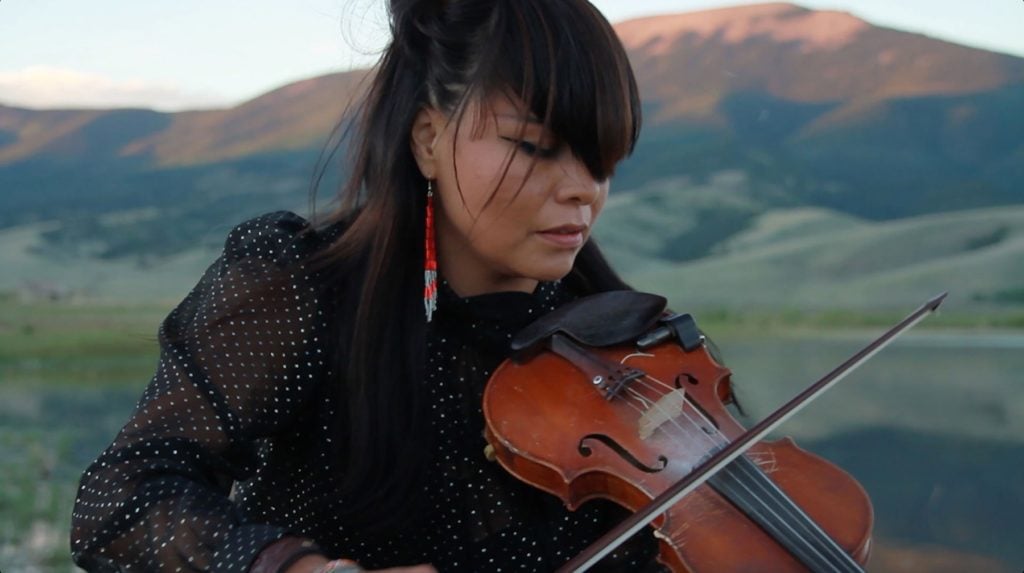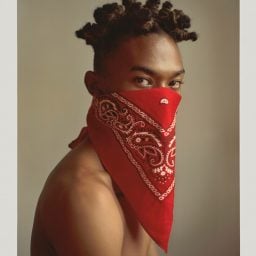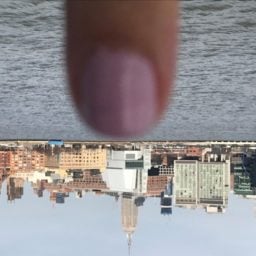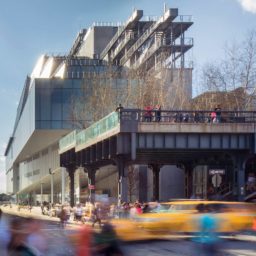Even in the Whitney Biennial, a show that this year is full of art that asks you to look and think again, Laura Ortman’s video is slightly unplaceable.
The 5-and-half minute clip depicts the artist, dressed as if for a concert, playing violin, cut between different dramatic Southwest landscapes. The soundtrack begins with a sample of Mendelssohn and layers of plucked strings, cresting into an ethereal soundscape. As she plays, a male dancer moves around her. At one point, beside the banks of a creek, he almost seems to crouch in supplication. At others, he appears absorbed into the drama of his own movements.
My Soul Remainer, the name of the work, hovers in a space between music video, filmed performance, and video art. Some measure of the hard-to-place energy it brings into the galleries comes from the fact that even Ortman herself was bemused when Biennial curators Jane Panetta and Rujeko Hockley came calling to her studio last November.
“You know I’m a musician, right?”, she recalls saying.
After Ortman explained her experimental music practice and her history as a performer, the curators asked if there was anything she had that was worth viewing. And so, on her laptop, she called up the short film clip she had made for the title track to her most recent album, also called My Soul Remainer.
Prior to that visit, the clip’s most prominent screening had been at ImagineNATIVE, the festival devoted to indigenous filmmakers in Toronto. There, Ortman says, by bad luck it been screened at a bar due to the elimination of the music-video category that year.
“Hardly anyone had seen it,” Ortman remembers, “and I always really believed in it.”
Cut to last week and the opening of the 2019 Biennial. The image of Ortman playing her violin from the My Soul Remainer video is one of the signatures of the event, featured on the press release and in advertisements for the show.
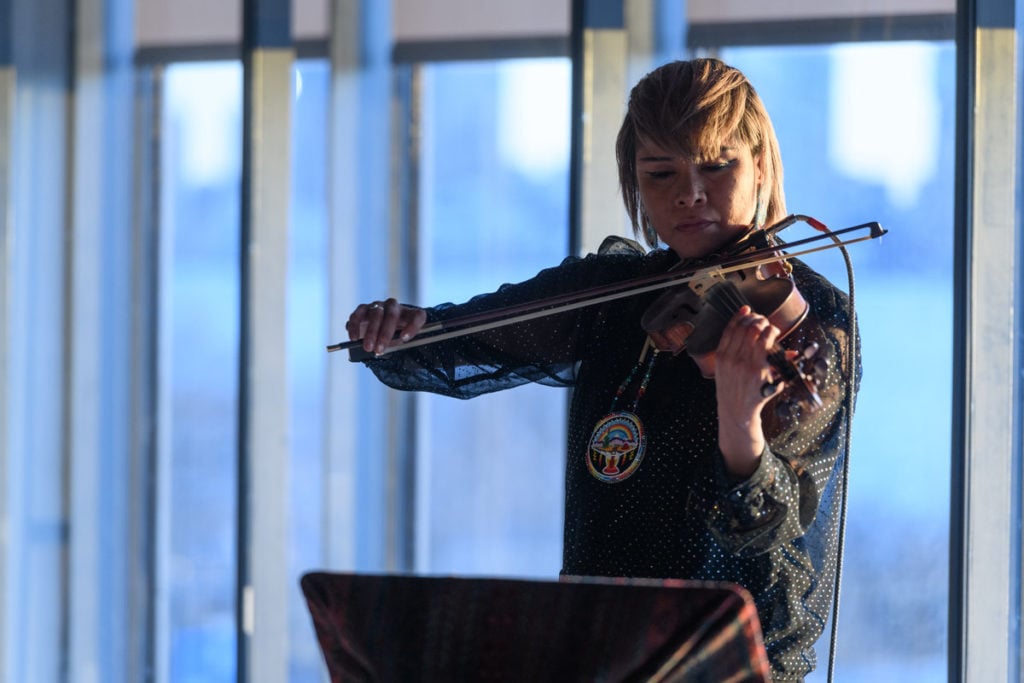
Laura Ortman performing. Photo by Filip Wolak, image courtesy Laura Ortman.
Ortman doesn’t want for acclaim: She has won grants from the Rauschenberg, Art Matters, Native Arts and Cultures, and Jerome foundations, among others. But she still divides her time between working as a hairdresser, to meet the bills, and a demanding schedule of collaboration as a performer, including work on a new band called In Defense of Memory. (By coincidence, one of her longtime collaborators, Raven Chacon, was himself featured in the last Biennial as part of the collective Post-Commodity. In February, she performed with Jeffrey Gibson, another star of this year’s Biennial, at the New Museum.)
Ortman’s music is known for compositions that alternate lyrical intimacy with layered improvisation, often experimenting with four-track tapes and remixing her own audio catalogue in an evolving dialogue with herself. “I try and create music for your most solo moments,” she says.
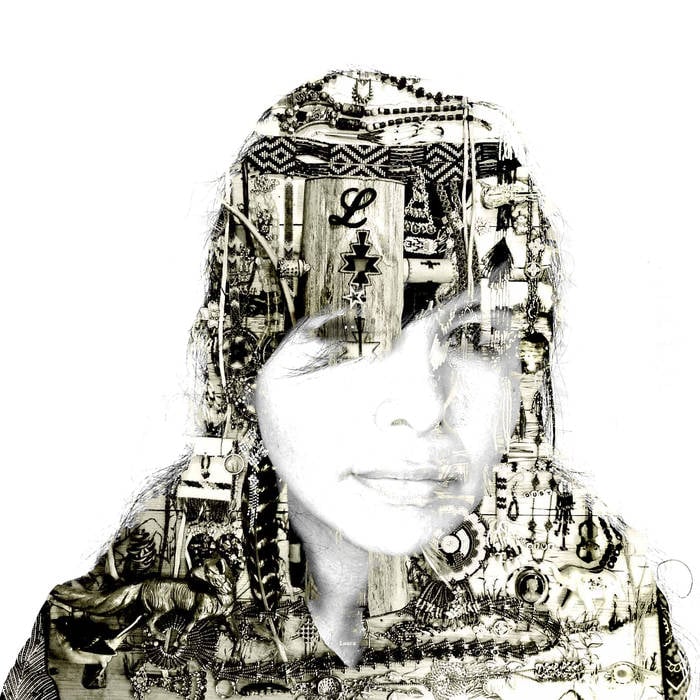
Cover of Laura Ortman’s album Someday We’ll Be Together, 2010.
Her practice does have a strong connection to visual art, going back to before she moved to New York in 1997. “I used to try to create painting and installation work about being isolated, of being singular,” she says. “Then I started making my own music for the installations, to fill them up. Then, at last, I decided that the sound was what was really moving me.” She still describes what she does as “sculpting sound.”
The My Soul Remainer video comes out of a series of collaborations with dancer Jock Soto and filmmaker Nanobah Becker. The group previously collaborated on a music video for “I Lost My Shadow,” a song from Ortman’s second album, Someday We’ll Be Together. That clip sets her music to images of musician and dancer floating through the New York City subway, parting and then meeting again.
As for the My Soul Remainer film, Soto picked a track he wanted to respond to from Ortman’s most recent album, which was recorded by NYC legend Martin Bisi and released in June 2017. The resulting collaboration between filmmaker, musician, and dancer was filmed near Eagle Nest, New Mexico, where Soto is based, with an all-Navajo crew. “We’re all Native, all indigenous, and it’s mostly shot from around where we are all from, the desert Southwest,” says Ortman. (Her tribal affiliation is White Mountain Apache; Soto and Becker are both Navajo.)
The appeal of the video is visceral, but it also plays with tensions across many levels at once: dance and music; highly stylized cultural forms and nature; the introspective intensity of Ortman’s music versus the multiple layers of meaning brought by its interpretation through image and movement.
“There are things I didn’t know how to express, except for in pure sound,” Ortman says. “Making this video with them brought out aspects of the song that I didn’t even know were possible—that I didn’t know how to put into language.”
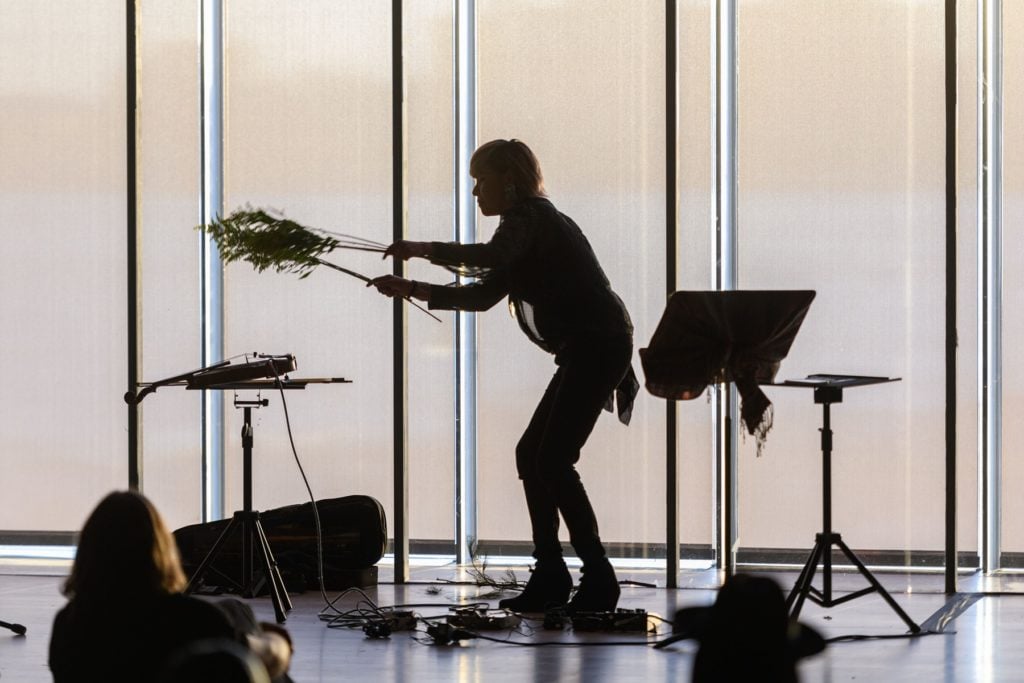
Laura Ortman performs at the Whitney, 2018. Photograph by Filip Wolak, courtesy the Whitney Museum of American Art.
For those piqued by the video in the Whitney galleries, Ortman is also performing a solo concert at the museum for Summer Solstice, on June 21.
